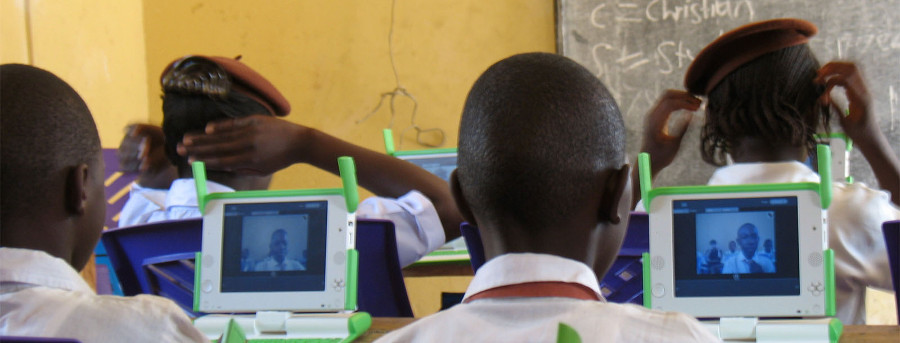
Chapter 1: One Laptop per Child
We begin with an in-depth account of OLPC and the theories on which the initiative is based – most notably the constructionist pedagogy of Seymour Papert and the digital society described by Nicholas Negroponte. As one of the most ambitious and advertised development initiatives of our time, OLPC is rich with debate over whether digital technology can truly empower the poor and marginalised and in which ways. The chapter introduces these debates and positions the thesis in relation to them.
Chapter 2: Development Encounters
The second chapter describes how ANT grew from the trenches of the science wars as a way to anthropologise the world across any such dichotomies as subject||object, modern||traditional, objective||subjective, developer||developing, etc. As already mentioned in relation to post-colonialism, ANT is presented as a symmetrical vocabulary to describe development encounters. The chapter also outlines principal ANT concepts such as actor-network and translation which are then further substantiated in later chapters.
Chapter 3: Method & Travelogue
The method chapter accounts for how I came to know the laptops in Nigeria, who and how I interviewed, where I did observations, and so forth. But it is also a travelogue. It contains the story of how I first became interested in OLPC through the media, how I was so lucky as to get a scholarship, how I went around Denmark, South America and Nigeria searching for things to observe and people to speak with, and how many of my learnings were mediated by internet, email and telephone.
Chapter 4: Rendering Laptops Mobile
Starting from this chapter the thesis turns more exclusively to the project in Nigeria. The chapter investigates the process which landed laptops at Akila's school. Building on the notion of translation, it describes how the laptops started life as bridgers of the digital divide before being translated by a group of Danes as a means to introduce more appreciative methods of teaching in Nigeria – before being translated again by a Nigerian school as a means to offer computer training to their students. The argument being that technology does not travel by itself, propelled by superiority or developmental necessity, it needs someone to pass it along, and being passed along is a transformative process.
Chapter 5: Laptop Multiplicity
Whereas the focus in chapter 4 was on forging relations to render the laptops mobile, the preoccupation in this chapter is what kind of laptop emerged in the end. Through the notion of enactment it is argued that rather than a single coherent laptop, the transfer actually resulted in many different ones. For instance, in Nigeria, teachers are enacting the laptop as an upholder of authority while missionaries in Denmark are enacting it as a development device doing the opposite. The argument of the chapter is that multiplicity belongs to the laptops rather than their context.
Chapter 6: Falling Into Limbo
While the laptops were rendered mobile and incorporated into diverse practices in both Denmark and Nigeria, they are currently caught in a kind of impasse. This chapter describes how ANT has a well developed vocabulary to describe all sorts of existences, such as black boxes, fluids, and bush fires, but lacks a mode of existence which is neither stable, stabilising nor non-existing. Accordingly, a notion of limbo is suggested to describe the laptops as caught in a halfway state where initial configurations have been suspended without being replaced by alternatives.
Chapter 7: Lines of the Apparatus
Rounding off the thesis is a chapter relating the situation at Akila's school to the post-colonial critique of development and the Foucauldian concept of apparatus. Through a reading of the apparatus based on Gilles Deleuze, the chapter sets out to trace the lines running through the project in Nigeria. It investigates their their different nature, the parts they play and how they have contributed to a problematic project.
